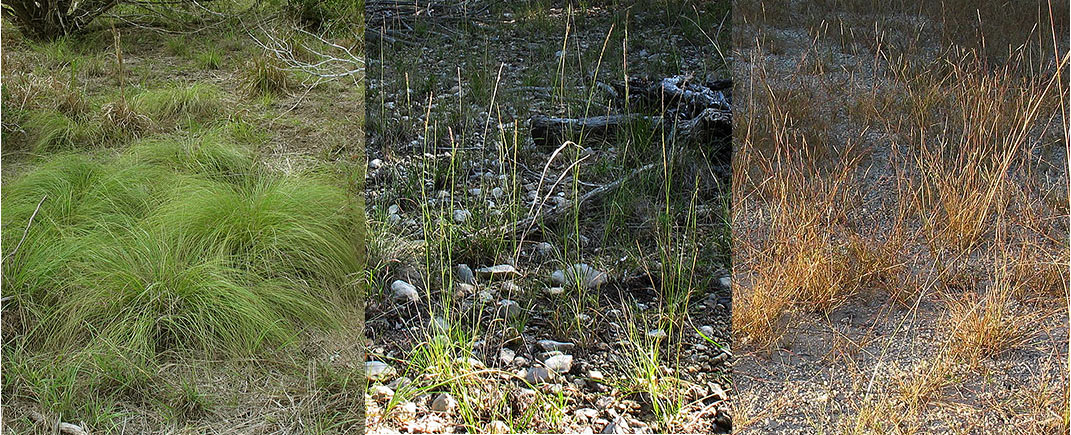
S. compositus var. drummondii (Aug.) — S. clandestinus (Oct.) — S. vaginiflorus (Oct.)
Typical habit forms. Click on plant for enlarged view.


Recent treatments of the Sporobolus compositus complex taxa provide no information on habit beyond presence/absence of rhizomes and unqualified ‘cespitose’/‘tufted.’ Earlier L. H. Shinners (Notes on the Texas Grasses, Rhodora 56, 1954) began his key for the varieties of S. asper [= compositus]with habit, although ‘clump’ type was not mentioned again in his treatment.
Correll & Johnston (Manual of the Vascular Plants of Texas, 1970, p. 223) also discuss habit distinctions within the [Asper] complex (including clandestinus as a variety):
tufted perennial … leafy, erect or ascending and slightly geniculate at the lower nodes
…
The plants with rhizomes of loose, sandy soil are called S. asper var. macer … but they are otherwise inseparable from the typical S. asper. Some plants have various combinations of the characteristics of more diffuse less strongly perennial, less robust habit, more geniculate stems, shorter leaves, shorter and more numerous and usually more hidden and axillary panicles and small spikelets, showing intergradation to S. vaginaeflorus …. Certain plants are so nearly intermediate that they cannot be referred with certainty to either S. asper or S. vaginaeflorus.
These earlier descriptions only partially correspond to my own observations. I have yet to see a plant collection in TEX/LL that was ambiguous as to S. asper or S. vaginiflorus, although the determinations reflect great uncertainty. For example, two collections of S. clandestinus were originally identified as S. compositus var. compositus and subsequently determined by one expert as var. drummondii and by another expert as S. vaginiflorus; one collection sheet for S. vaginiflorus also contains a specimen of S. clandestinus.
My own experience with natural populations has been limited to 4 taxa in Travis Co., Hays Co. and Bastrop Co. — S. clandestinus, S. compositus var. drummondii, S. vaginiflorus and S. compositus var. macer — especially the first three. These 3 taxa are common on our 50 acres in N. Hays Co. and on the Barton Creek greenbelt adjacent to our house in Travis Co. S. clandestinus & S. compositus var. drummondii in both areas have been found and collected within 100 feet of each other under the same soil/slope/exposure conditions. They have very different habit and are readily distinguishable at some distance at all times of year. The leftmost two photos at the top of this page show typical habit for these taxa in August/October.
S. compositus var. drummondii forms large lax dense tufts with narrow leaves, often 5—7 cm at the base with long weak culms, to 4 feet long, weighed down by the the inflorescence. In late fall the large tufts become a prostrate tangled mass of leaves & culms. Young plants and mowed/grazed plants may have shorter, somewhat more erect culms.
For gallery of S. compositus var. drummondii images.
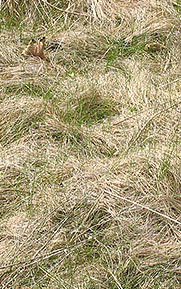
|
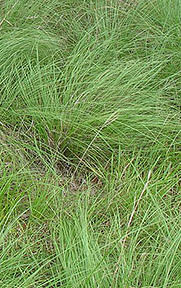
|
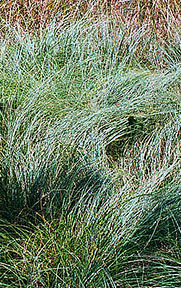
|
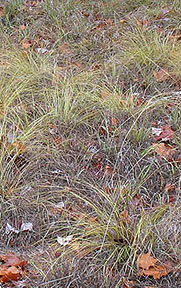
|
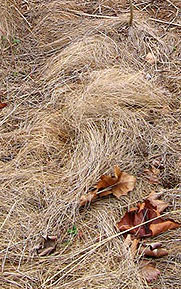
|
|---|---|---|---|---|
| April | May | September | October | December |
| S. compositus var. drummondii [ Click for enlargement ] | ||||
The erect stiff habit of S. compositus var. macer and S. clandestinus clearly contrasts with that of S. compositus var. drummondii. I haven't seen living populations of S. compositus var. compositus, but judging from herbarium collections, I would agree with comparison of Correll & Johnston above that apart from the rhizomes of var. macer, the two are "inseparable." And both these are somewhat larger, but otherwise of similar habit to S. clandestinus. Although it's culms are only rarely as stout as those of var. compositus/macer, the culm remains erect from early anthesis until the following spring, with sheaths opening in late fall, making for easy identification at some distance until the onset of new growth. The orange color of dried winter plants when damp distinguish it from adjacent grasses (such as Bothriochloa ischaemum var. songarica).
For gallery of S. clandestinus images.
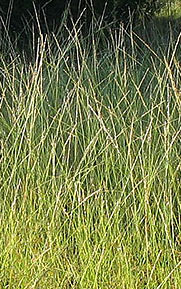
|
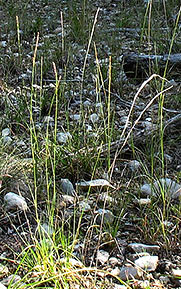
|
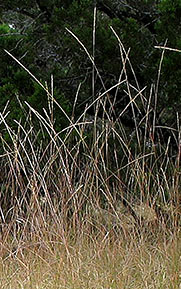
|
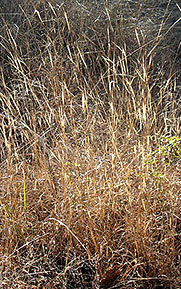
|
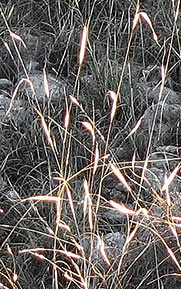 > >
|
|---|---|---|---|---|
| September | October | November | January | March |
| S. clandestinus [ Click for enlargement ] | ||||
My own experience with the annual S. vaginiflorus finds it so different in habit from anything in the S. compositus complex that I find it inconceivable that living populations of these two groups could be confused. Initial growth often has erect but weak culms, soon bending with growth; but in open areas lacking adjacent vegetation the plants tend to be prostrate, with culms radiating outward somewhat symmetrically along the ground. By early winter most plants are prostrate, often tangled into a texture unique to this taxon.
For gallery of S. vaginiflorus images.
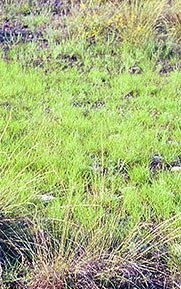
|
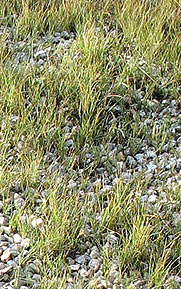
|
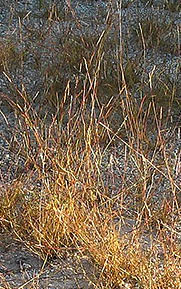
|
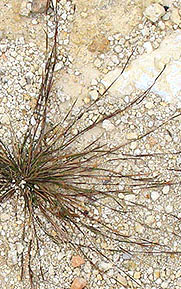
|
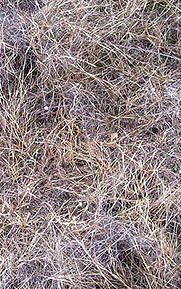
|
|---|---|---|---|---|
| September | September | October | November | January |
| S. vaginiflorus [ Click for enlargement ] | ||||